Picture the situation: You copied the exact command line for the Mac operating system you want to create a bootable USB installer with, based on Apple's instruction page. However, after you execute it in Terminal, you receive an error stating:
sudo: /Applications/Install macOS High Sierra.app/Contents/Resources/createinstallmedia: command not found
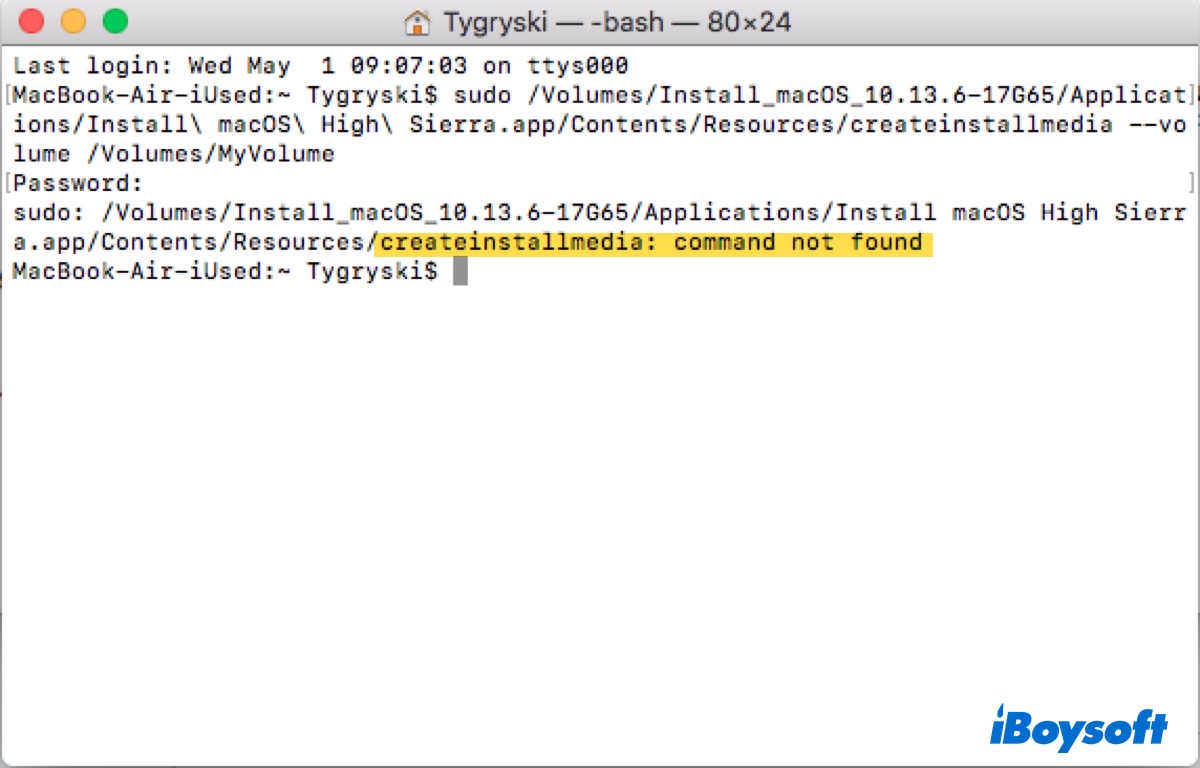
sudo: /applications/install macos sequoia.app/contents/resources/createinstallmedia: command not foundsudo: /applications/install macos sonoma.app/contents/resources/createinstallmedia: command not foundsudo: /applications/install macos ventura.app/contents/resources/createinstallmedia: command not found sudo: /applications/install macos monterey.app/contents/resources/createinstallmedia: command not foundsudo: /applications/install macos big sur.app/contents/resources/createinstallmedia: command not foundsudo: /applications/install macos catalina.app/contents/resources/createinstallmedia: command not foundsudo: /applications/install macos sierra.app/contents/resources/createinstallmedia: command not foundsudo: /applications/install os x el capitan.app/contents/resources/createinstallmedia: command not found
If you repeat the steps, you'll likely fail again. This situation can be frustrating, but fortunately, the solutions are straightforward.
An easy fix to createinstallmedia: command not found on Mac is to create the bootable installer with iBoysoft DiskGeeker:
- Open iBoysoft DiskGeeeker.
- Choose your USB drive and click Create boot disk.
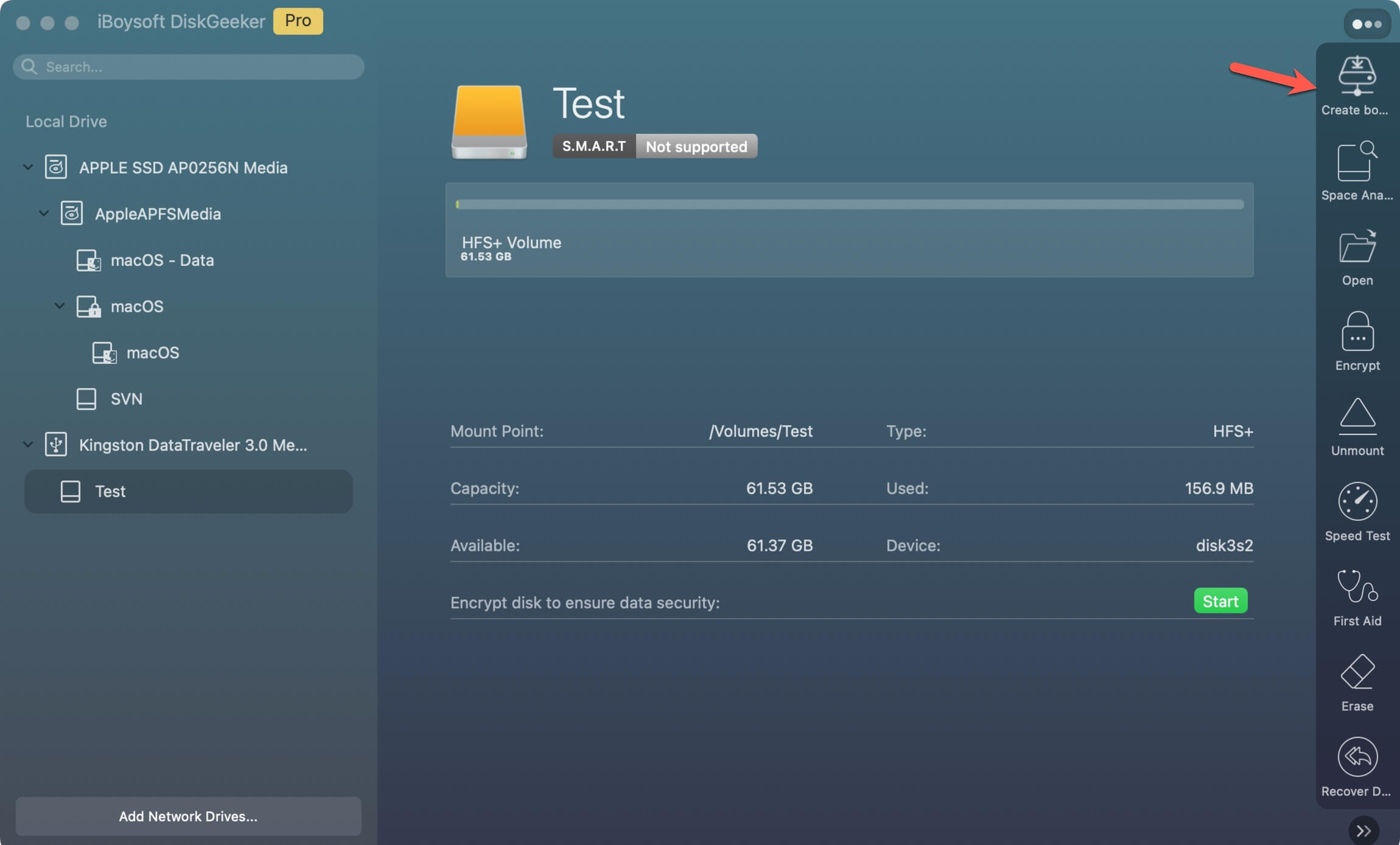
- Select the macOS version you want and click Create boot disk.
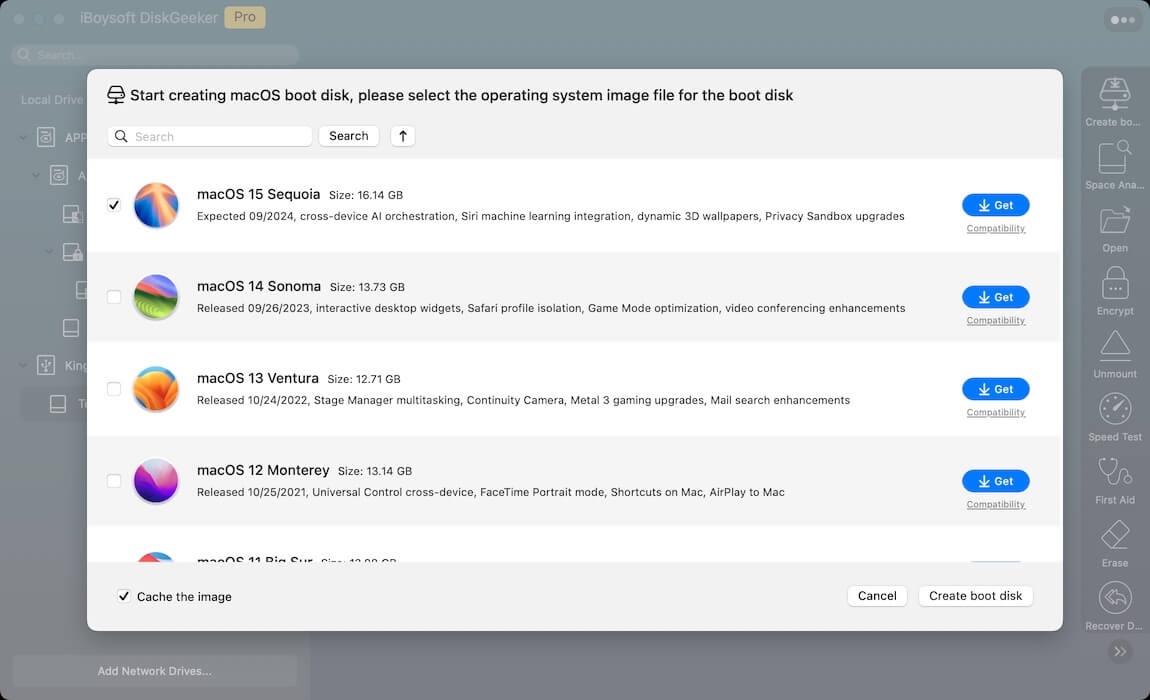
- Wait while the tool is creating the boot disk.
In this article, we'll help you understand the reasons why you can't create the bootable USB installer on Mac and see the error "createinstallmedia: command not found," and assist you in resolving it.
What cause 'createinstallmedia: command not found' in Terminal?
The message "createinstallmedia: command not found" can happen to any macOS version.
If you're creating a bootable USB installer of Sequoia, Sonoma, Ventura, Monterey, Big Sur, Catalina, Mojave, High Sierra, Sierra, Mavericks, Yosemite, or El Capitan, the following causes may result in "createinstallmedia: command not found":
- The installer isn't in your Applications folder.
- You downloaded the wrong installer or the installer is corrupted.
- The syntax of your command is incorrect.
- You're not logged in as an administrator.
Nevertheless, if you're creating a bootable installer of Lion or Mountain Lion, which doesn't have the built-in ability to create a USB installer, you'll face the error indefinitely. To build a bootable drive for such an old OS, employ a tool like iBoysoft DiskGeeker.
Otherwise, keep reading to figure out the solutions!
Fix 'createinstallmedia: command not found' when creating macOS bootable installer
To fix the "command not found" error when creating a bootable macOS installation media, you need to take a look at the command line itself. Here's a breakdown of the two typical codes for bootable installer creation:
sudo /Applications/Install\ macOS\ Sonoma.app/Contents/Resources/createinstallmedia --volume /Volumes/MyVolume
sudo /Applications/Install\ OS\ X\ El\ Capitan.app/Contents/Resources/createinstallmedia --volume /Volumes/MyVolume --applicationpath /Applications/Install\ OS\ X\ El\ Capitan.app
sudo: This is a command used in macOS to run programs with the security privileges of the superuser, or root.
/Applications/Install\ macOS\ Sonoma.app/Contents/Resources/createinstallmedia: This is the path to the createinstallmedia tool from the Applications folder, which is used to create a bootable macOS installer.
--volume /Volumes/MyVolume: This specifies the external volume where the macOS installation media will be created. In this case, it's targeting an external drive or a volume on an external drive named "MyVolume."
--applicationpath /Applications/Install\ OS\ X\ El\ Capitan.app: This specifies the path to the OS X El Capitan installation application. It's only necessary for macOS Sierra and OS X versions.
Now that you understand the command, you should have a clearer picture of what may contribute to the error "createinstallmedia: command not found." Let's continue with the tips that ensure the command executes properly.
Fix 1: Use a bootable USB tool
When you encounter the error "createinstallmedia command not found" in Terminal, you can use a bootable USB tool like iBoysoft DiskGeeker to create the install disk for macOS.
This tool provides an intuitive interface, allowing you to easily create bootable USB installers for macOS High Sierra and later with its built-in installers. With it, you can prevent any error that could otherwise occur if using Terminal.
For macOS Sierra and earlier OS versions, you can also download the necessary Mac OS DMG file and then upload it to this disk maker to make a boot drive.
iBoysoft DiskGeeker - The best bootable disk maker for macOS
- Create bootable USB installers for macOS Sequoia, Sonoma, Ventura, Monterey, Big Sur, Catalina, Mojave, High Sierra
- Make install drives for macOS Sierra/OS X El Capitan/OS X Yosemite/OS X Mavericks/OS X Mountain Lion/OS X Lion or earlier
- Provide in-store macOS installers in the .dmg format
- Doesn't require running Terminal command
- Intel & Apple Silicon Macs supported.
Read-only & risk-free
Here's how to create a bootable USB installer for macOS when Terminal says “createinstallmedia command not found:”
Step 1: Download and install iBoysoft DiskGeeker.
Step 2: Open this bootable disk creator, then select the USB drive from the left and click Create boot disk.

Step 3: Decide which macOS version you want to create a bootable drive with.
For macOS Sequoia/Sonoma/Ventura/Monterey/Big Sur/Catalina/Mojave/High Sierra, choose the installer and click Create boot disk to download it.

For macOS Sierra and earlier, click Create boot disk > Browse images to upload the DMG installer.
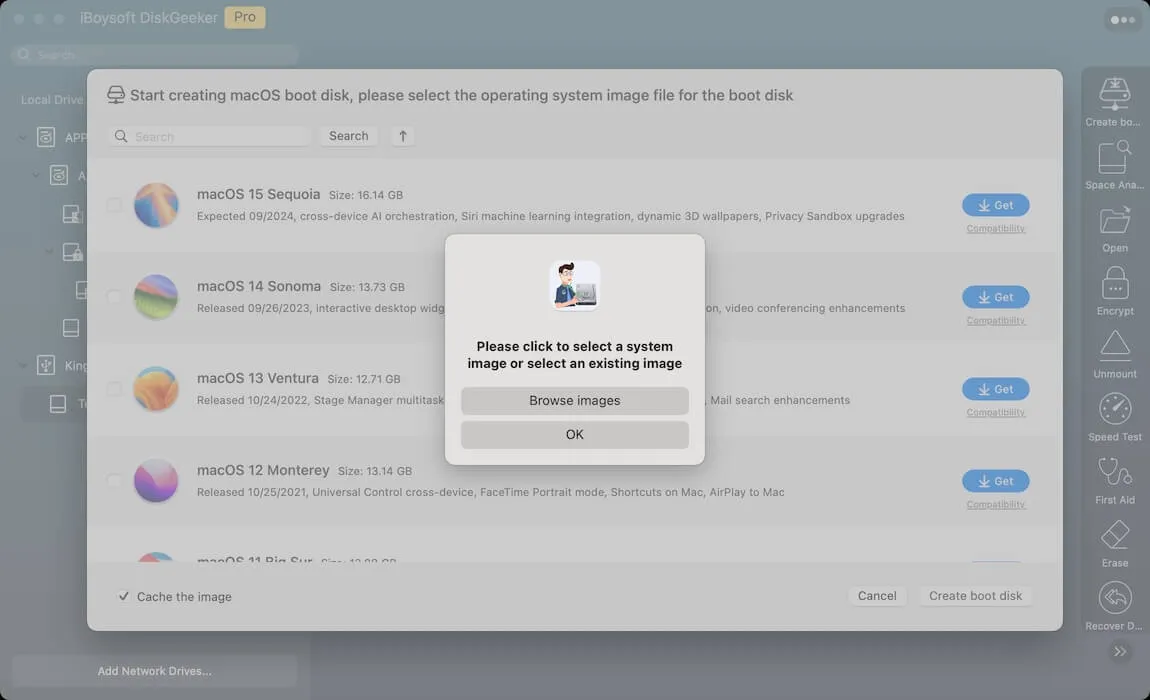
Step 4: Click Continue after reading the alert that creating the boot drive will erase your external disk.
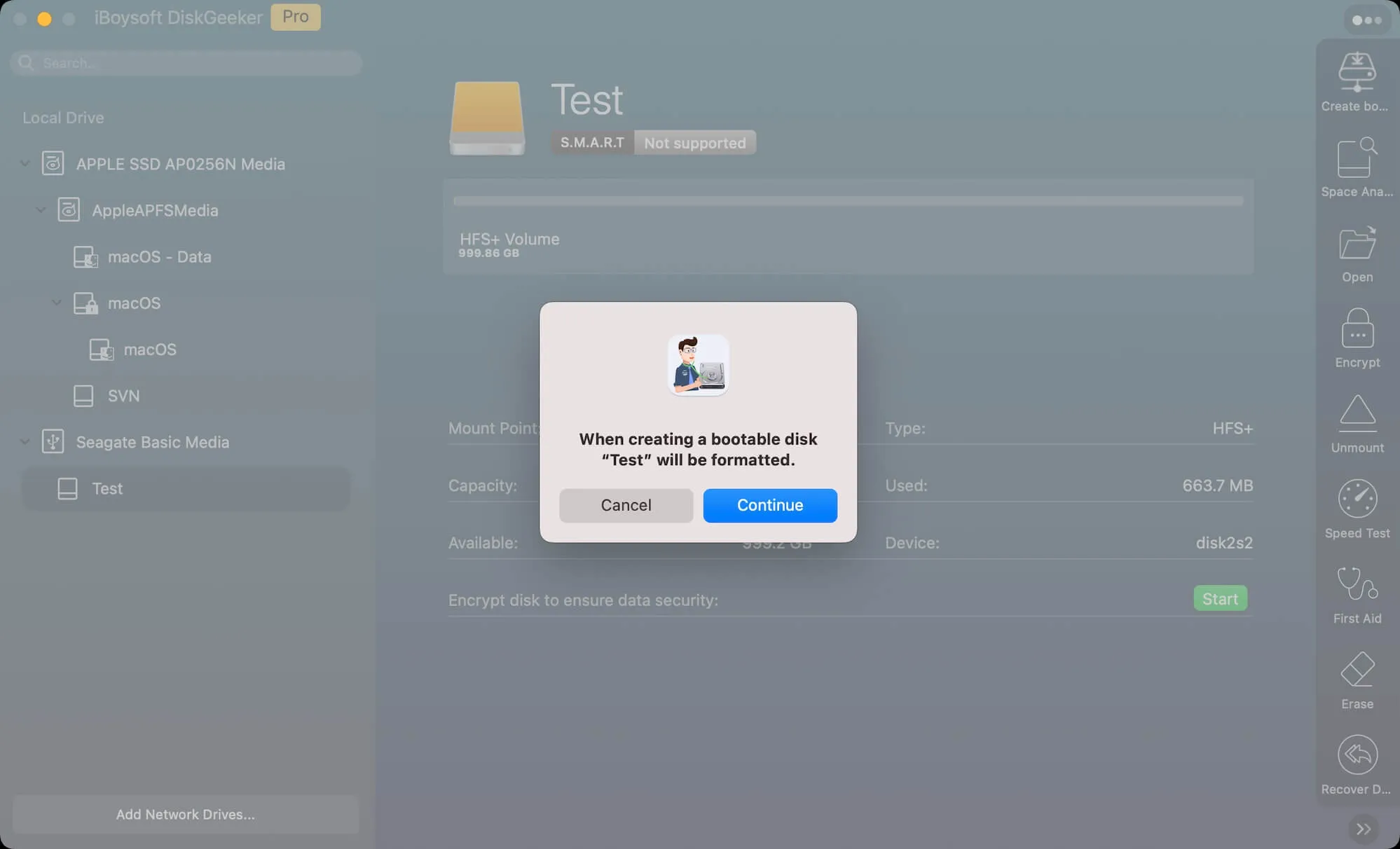
Step 5: Wait for the bootable USB to be created.
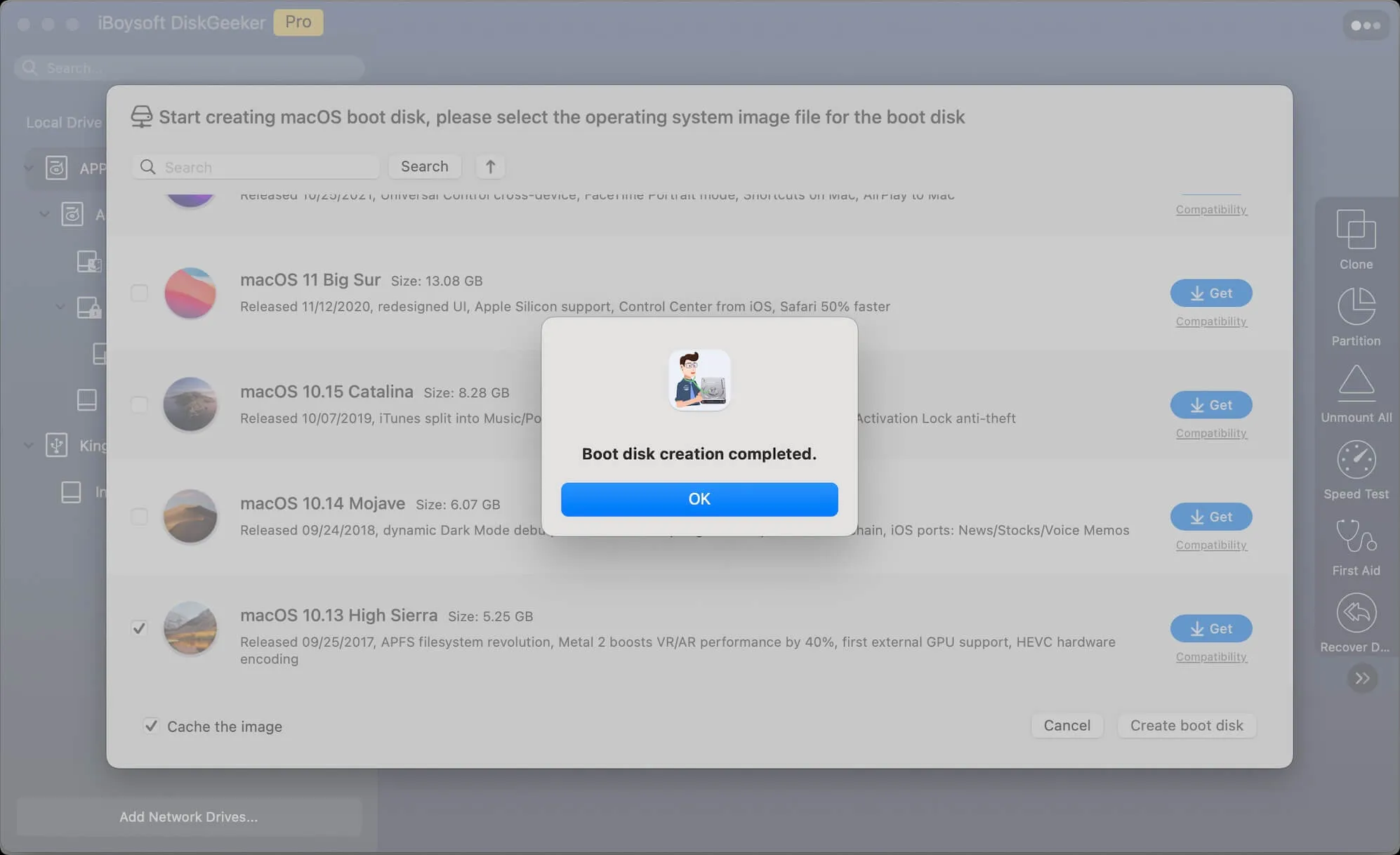
Share this app to benefit more people who can't make bootable USB installers due to createinstallmedia command not found!
Fix 2: Make sure you're using an admin account
To run sudo, you must log in to your Mac as an administrator. If you're currently using a standard or guest user account that doesn't have administrator privileges, log out and log back in with the admin account.
Fix 3: Ensure the installer is in the Applications folder
Before executing the command, you must add the full installer to your Mac's Applications folder. That's because the createinstallmedia tool must be in the Applications folder, as specified in the code's path.
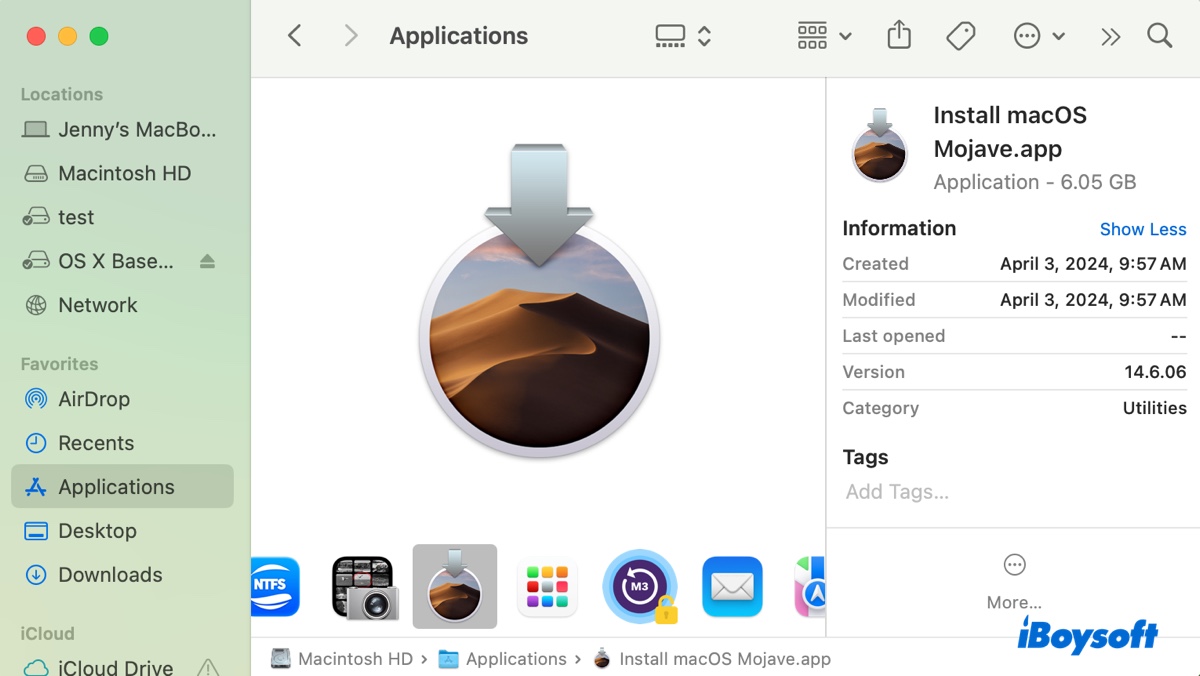
If you downloaded the full installer in application format (.app), this won't be an issue since the app is automatically added to the Applications folder.
However, if you downloaded the DMG file, you need to double-click to open it, then open the pkg file inside and follow the instructions on the screen to extract it to your Applications folder.
Fix 4: Delete and redownload the right installer
It's also essential to have the correct installer containing the createinstallmedia command.
You can check the file size of the installer in your Applications folder. If it's only a few hundred bytes, it's certainly not the right one. Also, if the installer isn't named something similar to "Install macOS Mojave.app," it may not be the one you need.
In this case, you should delete the improper installer and redownload it from the Mac App Store, Terminal, or a reliable source (Directly download macOS Installers).
To download the full installer from Terminal, check out this guide: How to Update Mac from Terminal with Softwareupdate Command Line Tool?
You can also get the macOS DMG file from the sources below:
To check if your "Install macOS xxx" application has the createinstallmedia file, right-click on the installer, select "Show Package Contents," then navigate to Contents > Resources. If it is lacking the file Contents/Resources/createinstallmedia, it can't be created as a bootable USB installer.
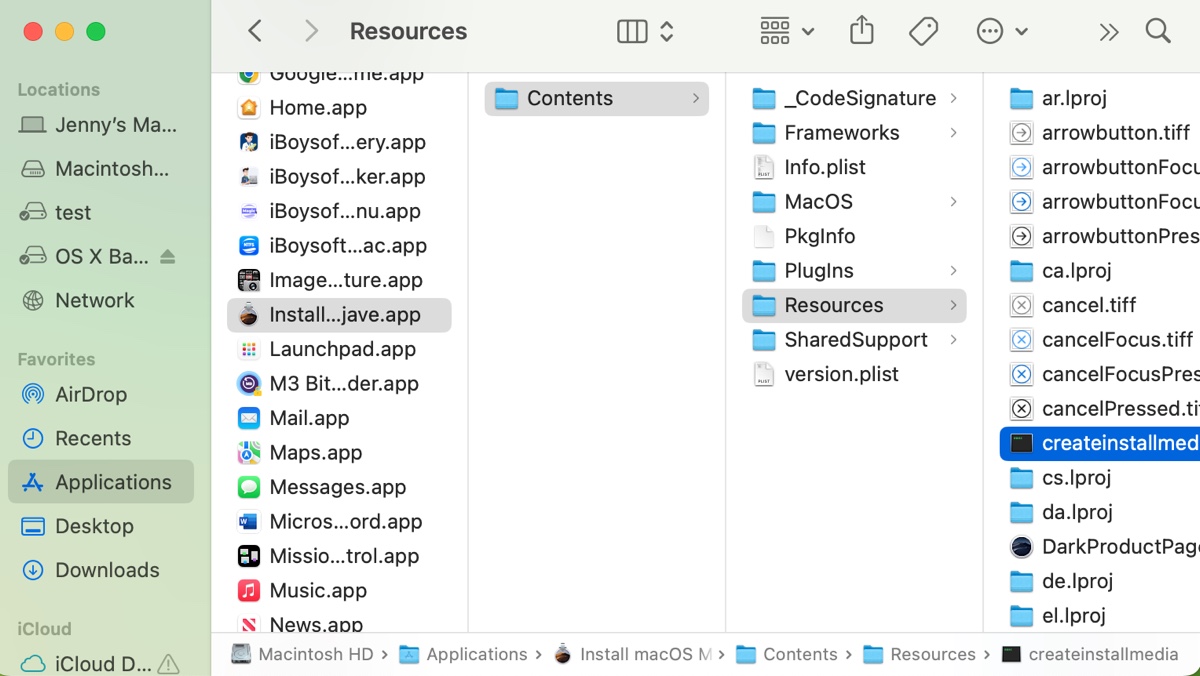
Fix 5: Check the command syntax
The syntax of the command needs to be formed correctly for the OS version you're attempting to use.
After copying the command string provided by Apple, you must replace MyVolume with your external drive's name. If the name contains a space, you need to use a backslash. For instance, if the name is Boot Media, you should reference it in Terminal as Boot\ Media.
This complicates things, so it's recommended to rename your external drive as MyVolume prior to running the command. This way, you can copy and paste the command without any modification.
Here's the correct command to use, provided that you have the proper installer in the Applications folder:
macOS Sequoia:
sudo /Applications/Install\ macOS\ Sequoia.app/Contents/Resources/createinstallmedia --volume /Volumes/MyVolume
macOS Sonoma:sudo /Applications/Install\ macOS\ Sonoma.app/Contents/Resources/createinstallmedia --volume /Volumes/MyVolume
macOS Ventura:sudo /Applications/Install\ macOS\ Ventura.app/Contents/Resources/createinstallmedia --volume /Volumes/MyVolume
macOS Monterey:sudo /Applications/Install\ macOS\ Monterey.app/Contents/Resources/createinstallmedia --volume /Volumes/MyVolume
macOS Big Sur:sudo /Applications/Install\ macOS\ Big\ Sur.app/Contents/Resources/createinstallmedia --volume /Volumes/MyVolume
macOS Catalina:sudo /Applications/Install\ macOS\ Catalina.app/Contents/Resources/createinstallmedia --volume /Volumes/MyVolume
macOS Mojave:sudo /Applications/Install\ macOS\ Mojave.app/Contents/Resources/createinstallmedia --volume /Volumes/MyVolume
macOS High Sierra:sudo /Applications/Install\ macOS\ High\ Sierra.app/Contents/Resources/createinstallmedia --volume /Volumes/MyVolume
OS X El Capitan:sudo /Applications/Install\ OS\ X\ El\ Capitan.app/Contents/Resources/createinstallmedia --volume /Volumes/MyVolume --applicationpath /Applications/Install\ OS\ X\ El\ Capitan.app
Share this guide to help others fix "createinstallmedia: command not found" when making bootable media for Sequoia, Sonoma, Ventura, Monterey, Big Sur, Catalina, Mojave, and earlier.
